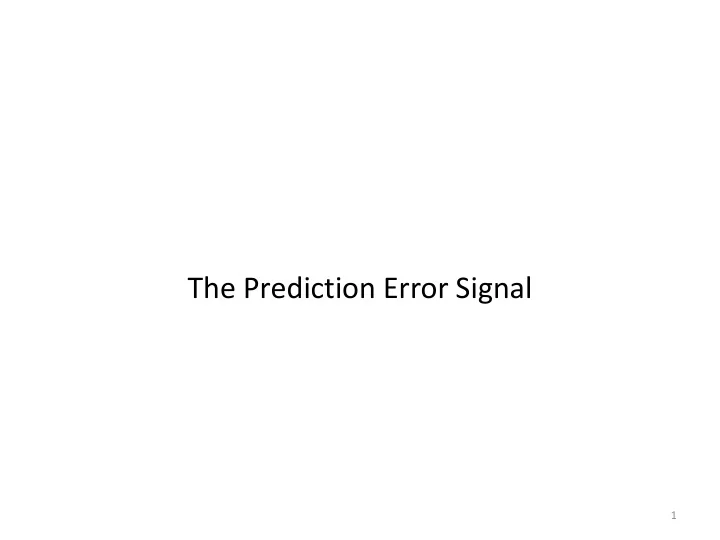

The Prediction Error Signal 1
Prediction Error Signal Behavior 2
LP Speech Analysis file:s5, ss:11000, frame size (L):320, lpc order (p):14, cov method Top panel: speech signal Second panel: error signal Third panel: log magnitude spectra of signal and LP model Fourth panel: log magnitude spectrum of error signal 3
LP Speech Analysis file:s5, ss:11000, frame size (L):320, lpc order (p):14, ac method Top panel: speech signal Second panel: error signal Third panel: log magnitude spectra of signal and LP model Fourth panel: log magnitude spectrum of error signal 4
LP Speech Analysis file:s3, ss:14000, frame size (L):160, lpc order (p):16, cov method Top panel: speech signal Second panel: error signal Third panel: log magnitude spectra of signal and LP model Fourth panel: log magnitude spectrum of error signal 5
LP Speech Analysis file:s3, ss:14000, frame size (L):160, lpc order (p):16, ac method Top panel: speech signal Second panel: error signal Third panel: log magnitude spectra of signal and LP model Fourth panel: log magnitude spectrum of error signal 6
Properties of the LPC Polynomial 7
Minimum-Phase Property of A ( z ) Proof: Assume that is a zero (root) of A ( z ) The minimum mean-squared error is Thus, A ( z ) could not be the optimum filter because we could replace z 0 by and decrease the error 8
PARCORs and Stability Proof : It is easily shown that – k i is the coefficient of z -i in A ( i ) ( z ), i.e., Therefore If | k i | 1, then either all the roots must be on the unit circle or at least one of them must be outside the unit circle • | k i |<1 is a necessary and sufficient condition for A(z) to be a minimum phase system and 1/A(z) to be a stable system 9
Root Locations for Optimum LP Model 10
Pole-Zero Plot for Model 11
Pole Locations 12
Pole Locations ( F S =10,000 Hz) 13
Estimating Formant Frequencies • compute A ( z ) and factor it • find roots that are close to the unit circle. • compute equivalent analog frequencies from the angles of the roots. • plot formant frequencies as a function of time. 14
Spectrogram with LPC Roots 15
Spectrogram with LPC Roots 16
Alternative Representations of the LP Parameters 17
LP Parameter Sets 18
PARCOR • PARCORs to Prediction Coefficients – assume that k i , i =1,2, …, p are given. Then we can skip the computation of k i in the Levinson recursion. 19
PARCOR • Prediction Coefficients to PARCORs – assume that j , j =1,2, …, p are given. Then we can work backwards through the Levinson Recursion. 20
Log Area Ratio • log area ratio coefficients from PARCOR coefficients with inverse relation 21
Roots of Predictor Polynomial • roots of the predictor polynomial where each root can be expressed as a z-plane i.e., • important for formant estimation 22
Impulse Response of H(z) • IR of all pole system 23
LP Cepstrum • cepstrum of IR of overall LP system from predictor coefficients • predictor coefficients from cepstrum of IR where 24
Autocorrelation of IR • autocorrelation of IR 25
Autocorrelation of Predictor Polynomial • autocorrelation of the predictor polynomial with IR of the inverse filter with autocorrelation 26
Line Spectral Pairs • Quantization of LP Parameters • consider the magnitude-squared of the model frequency response where g is a parameter that affects P . • spectral sensitivity can be defined as which measures sensitivity to errors in the g i parameters 27
Line Spectral Pairs spectral sensitivity for log area ratio spectral sensitivity for k i parameters; parameters, g i – low sensitivity for low sensitivity around 0; high virtually entire range is seen sensitivity around 1 28
Line Spectral Pairs • Consider the following • Form the symmetric polynomial P ( z ) as • Form the anti-symmetric polynomial Q ( z ) as 29
LSP Example 30
Line Spectral Pairs • properties of LSP parameters 1. all the roots of P ( z ) and Q ( z ) are on the unit circle 2. a necessary and sufficient condition for | k i |< 1, i = 1, 2, …, p is that the roots of P ( z ) and Q ( z ) alternate on the unit circle 3. the LSP frequencies get close together when roots of A ( z ) are close to the unit circle 31
Applications 32
Speech Synthesis 33
Speech Coding 1. Extract α k parameters properly 2. Quantize α k parameters properly so that there is little quantization error – Small number of bits go into coding the α k coefficients 3. Represent e ( n ) via: – Pitch pulses and noise — LPC Coding – Multiple pulses per 10 msec interval — MPLPC Coding – Codebook vectors — CELP • Almost all of the coding bits go into coding of e ( n ) 34
LPC Vocoder 35
Recommend
More recommend